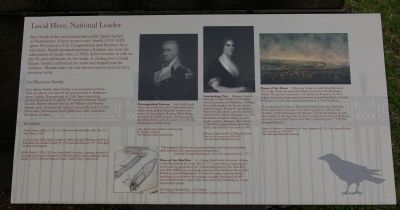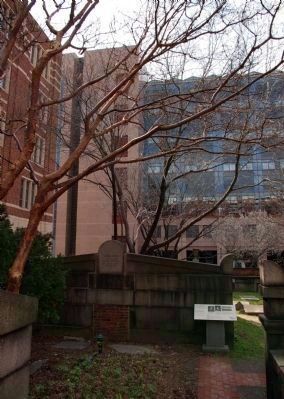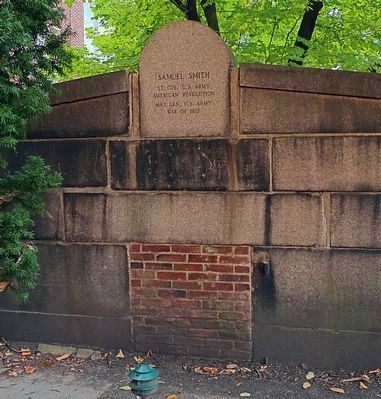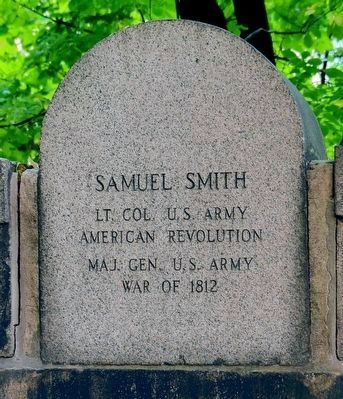University of Maryland in Baltimore, Maryland — The American Northeast (Mid-Atlantic)
Local Hero, National Leader
Sam Smith is the most important public figure buried at Westminster. A hero in two wars, Smith (1752-1839) spent 40 years as a U.S. Congressman and Senator. As a merchant, Smith amassed and lost a fortune, but won the admiration of locals who, in 1835, didn't hesitate to call on the 83-year-old leader in the midst of rioting over a bank failure. Smith confronted the mob and helped end the violence. Months later, he was elected mayor and served a two year term.
An Illustrious Family
John Spear Smith, Sam's father, was a prominent Scots-Irish merchant who moved his young family to Baltimore from Carlisle, Pennsylvania in 1760. Sam entered his father's busines at 14 and by 19 was sent overseas. Sam's brother, Robert (buried here in the William and Robert Smith vault), served as the nation's second Secretary of the Navy (after Sam turned down Jefferson's offer) and sixth Secretary of State.
Inscriptions
(Vault) Samuel Smith, Lt. Col. U.S. Army American Revolution, Maj. Gen. U.S. Army War of 1812
(Ground Slab) Molly Smith, Daughter of Robert and Jane Buchanan and Wife of John Smith who was Born October 9th, 1723 and Died February 17th, 1782, Aged 58 Years And 4 Months
Molly Smith (1723-1782) was Sam Smith's mother. A plaque located in the catacombs marks the graves of Smith's father and granfather, John Smith (1723-1794) and Samuel Smith (1698-1784), respectively.
[print]
Distinguished Veteran Sam Smith spent three-and-a-half years as a Continental Army officer commanding Maryland troops at the battles of Long Island, Harlem, White Plains, Brandywine and Monmouth. Wounded at the Mud Fort, Smith spent the winter of 1778 with Washington at Valley Forge.
Major General Samuel Smith, engraving after St. Memin, undated
The Maryland Historical Society
[painting]
Interlocing Ties Margaret Spear's marriage to Sam Smith in 1778 linked several generations of Baltimore's leading Scots-Irish families, the Spears, Smiths, and Buchanans. Margaret's grandfather, Irish-born John Spear, came to America with his uncle, Robert Buchanan, in 1720. Buchanan's daughter, Molly, was Sam Smith's mother. Margaret Spear Smith (1759-1842), depicted here after Sam's death, was buried in this vault in 1842.
Margaret Spear Smith by William Edward West, oil on canvas, ca. 1839-1841
The Maryland Historical Society
[map]
Hero of the Mud Fort Lt. Colonel Sam Smith's stubborn defeense of the Mud Island fort in the fall of 1777 earned him a congressional award and the gratitude of his commanding general. The Mud Fort (later Fort Mifflin) sat on strategic ground on the Deelaware River below British-occupied Philadelphia. The fort fell under relentless British bombing, but not before the serously wounded Smith and his 400 troops stalled enemy supply ships, thus protecting Washington's troops from further attack.
The Course of the Delaware River...1779 (detail)
Special Collections and University Archives, Rutgers University Libraries
[painting]
Home of the Brave When war broke out with Great Britain in 1812, Sam Smith was appointed Major General of the Maryland Militia. His spirited command of the defense of Baltimore in 1814 helped American troops repel the invaders on land (the Battle of North Point) and on water (the naval bombardment of Fort McHenry).
The gathering of troops on Hampstead Hill (present day Patterson Park), shown here, was part of an American line of defense that included 16,000 militia and 100 cannons. The British decision to hald their march set the stage for a 25-hour bombardment of Fort McHenry, an event that inspired Francis Scott Key's immortal poem, "The Star-Spangled Banner."
Defense of Baltimore-Assembling of the Troops, September 12, 1814 by Thomas Ruckle, oil on canvas, ca. 1814-1815
The Maryland Historical Society
Topics. This historical marker is listed in these topic lists: Cemeteries & Burial Sites
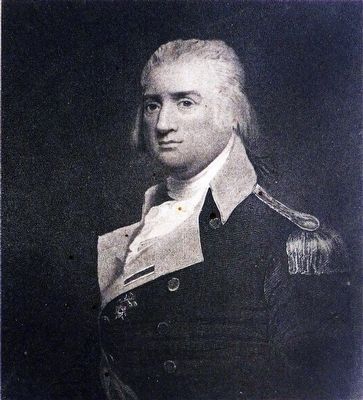
Photographed By Allen C. Browne, September 5, 2015
3. Sam Smith
Distinguished Veteran Sam Smith spent three-and-a-half years as a Continental Army officer commanding Maryland troops at the battles of Long Island, Harlem, White Plains, Brandywine and Monmouth. Wounded at the Mud Fort, Smith spent the winter of 1778 with Washington at Valley Forge.
Major General Samuel Smith, engraving after St. Memin, undated The Maryland Historical SocietyClose-up of painting on marker
Major General Samuel Smith, engraving after St. Memin, undated The Maryland Historical Society
Location. 39° 17.379′ N, 76° 37.411′ W. Marker is in Baltimore, Maryland. It is in University of Maryland. Marker can be reached from West Fayette Street near North Greene Street. Marker is on the grounds of Westminster Hall and Burying Ground. Touch for map. Marker is at or near this postal address: 519 West Fayette Street, Baltimore MD 21201, United States of America. Touch for directions.
Other nearby markers. At least 26 other markers are within walking distance of this marker. Bernard von Kapff (here, next to this marker); James McHenry, M.D. (here, next to this marker); a different marker also named James McHenry (a few steps from this marker); Believe it or Not (a few steps from this marker); The Carriage Gates of Westminster Burying Ground (within shouting distance of this marker); Infusing Style and Sophistication: The Influence of Maximilian Godefroy (within shouting distance of this marker); A Beloved General (within shouting distance of this marker); Dugan-Hollins Family Vault (within shouting distance of this marker); The Gilmors (within shouting distance of this marker); Among Family: Poe’s Original Burial Place (within shouting distance
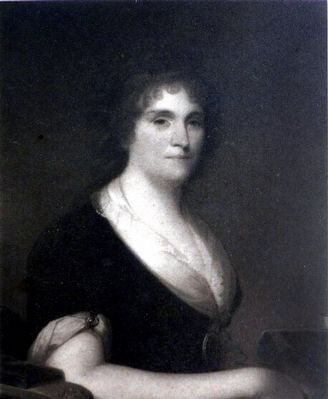
Photographed By Allen C. Browne, September 5, 2015
4. Interlocking Ties
Margaret Spear's marriage to Sam Smith in 1778 linked several generations of Baltimore's leading Scots-Irish families, the Spears, Smiths, and Buchanans. Margaret's grandfather, Irish-born John Spear, came to America with his uncle, Robert Buchanan, in 1720. Buchanan's daughter, Molly, was Sam Smith's mother. Margaret Spear Smith (1759-1842), depicted here after Sam's death, was buried in this vault in 1842.
Margaret Spear Smith by William Edward West, oil on canvas, ca. 1839-1841 The Maryland Historical SocietyClose-up of painting on marker
Margaret Spear Smith by William Edward West, oil on canvas, ca. 1839-1841 The Maryland Historical Society
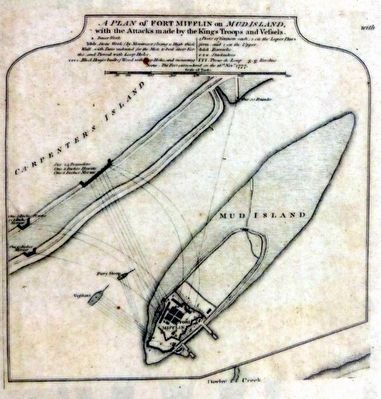
Photographed By Allen C. Browne, September 5, 2015
5. Hero of the Mud Fort
Lt. Colonel Sam Smith's stubborn defense of the Mud Island fort in the fall of 1777 earned him a congressional award and the gratitude of his commanding general. The Mud Fort (later Fort Mifflin) sat on strategic ground on the Delaware River below British-occupied Philadelphia. The fort fell under relentless British bombing, but not before the seriously wounded Smith and his 400 troops stalled enemy supply ships, thus protecting Washington's troops from further attack.
The Course of the Delaware River...1779 (detail) Special Collections and University Archives, Rutgers University LibrariesClose-up of map on marker
The Course of the Delaware River...1779 (detail) Special Collections and University Archives, Rutgers University Libraries
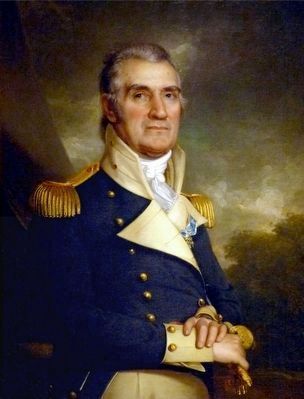
Photographed By Allen C. Browne, September 5, 2015
6. Samuel Smith
This 1817 Portrait of Samuel Smith by Rembrandt Peale hangs in the Maryland Historical Society Museum in Baltimore, Maryland. It was commissioned by the Baltimore City Council in 1816. Samuel Smith was a Revolutionary War officer, Commander-in-Chief at the Defense of Baltimore in 1814 and Mayor of Baltimore 1835-38.
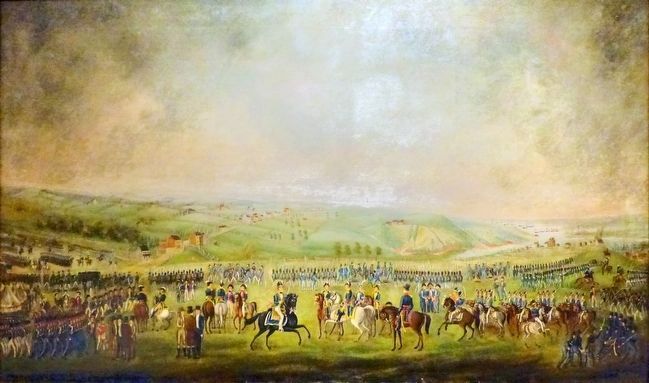
Photographed By Allen C. Browne, September 5, 2015
7. Home of the Brave
When war broke out with Great Britain in 1812, Sam Smith was appointed Major General of the Maryland Militia. His spirited command of the defense of Baltimore in 1814 helped American troops repel the invaders on land (the Battle of North Point) and on water (the naval bombardment of Fort McHenry).
The gathering of troops on Hampstead Hill (present day Patterson Park), shown here, was part of an American line of defense that included 16,000 militia and 100 cannons. The British decision to hold their march set the stage for a 25-hour bombardment of Fort McHenry, an event that inspired Francis Scott Key's immortal poem, “The Star-Spangled Banner.“
Defense of Baltimore-Assembling of the Troops, September 12, 1814 by Thomas Ruckle
This painting hangs in the Maryland Historical Society Museum.
The gathering of troops on Hampstead Hill (present day Patterson Park), shown here, was part of an American line of defense that included 16,000 militia and 100 cannons. The British decision to hold their march set the stage for a 25-hour bombardment of Fort McHenry, an event that inspired Francis Scott Key's immortal poem, “The Star-Spangled Banner.“
Defense of Baltimore-Assembling of the Troops, September 12, 1814 by Thomas Ruckle
This painting hangs in the Maryland Historical Society Museum.
Credits. This page was last revised on February 20, 2021. It was originally submitted on March 26, 2008, by Christopher Busta-Peck of Shaker Heights, Ohio. This page has been viewed 3,229 times since then and 21 times this year. Photos: 1, 2. submitted on March 27, 2008, by Christopher Busta-Peck of Shaker Heights, Ohio. 3, 4, 5, 6, 7, 8, 9. submitted on September 7, 2015, by Allen C. Browne of Silver Spring, Maryland.
